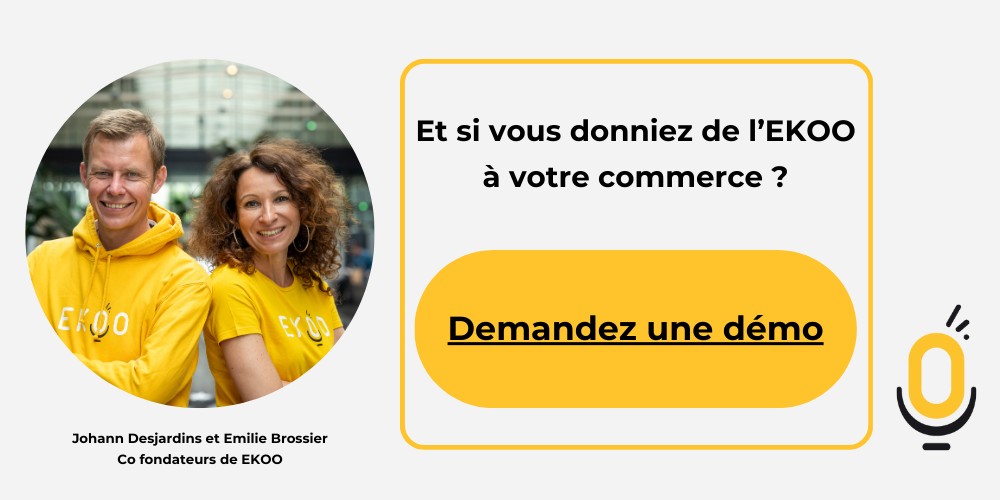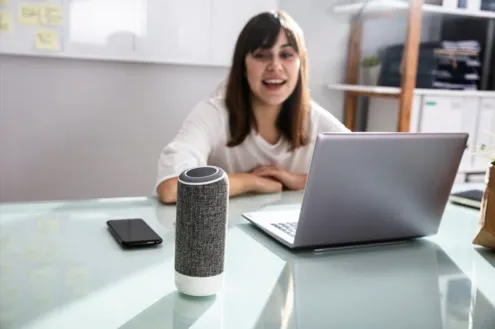Comme vous avez sûrement pu le remarquer, l’une des technologies très en vogue ces derniers temps est la recherche vocale. Sa croissance s’explique principalement par les assistants vocaux fournis avec les smartphones ou hauts parleurs intelligents. Ces derniers deviennent de plus en plus populaires auprès des consommateurs de part leur fonctionnalité et leur précision. Il suffit de leur donner des ordres ou poser des questions afin qu’ils exécutent les tâches ou services demandés grâce à des logiciels de reconnaissance vocale.

Les différents types d’assistants vocaux
Si l’on considère que 40,2% des adultes américains utilisent un assistant à commande vocale, on se rend bien compte de l’importance et du potentiel que ce marché offre. En France, on compte environ 20 millions d’utilisateurs d’assistants vocaux, dont 3,2 millions via des enceintes connectés.
C’est pour cette raison que de nombreuses entreprises investissent en recherche et développement sur ce domaine. Aujourd’hui plus de 4,2 milliards d’assistants vocaux numériques circulent dans le monde.
On peut distinguer cependant différents types d’assistants vocaux :
- Ceux intégrés dans des appareils connectés comme des enceintes : Amazon Echo (Alexa), Google Home (Google assistant)…
- Dans les systèmes d’exploitation des téléphones : IOS (Siri), Android (Google Assistant), Samsung (Bixby), Windows phone (Cortana)
- Dans les plateformes de messageries : WeChat secretary sur WeChat
- Ou encore dans des appareils électroménagers ou des voitures : MBUX chez Mercedes.
Ce marché est tout de même dominé par certains grands noms : Apple avec Siri, Google avec Google assistant et Amazon avec Alexa.

Quelle utilisation à la maison comme au travail
Plusieurs utilisations peuvent être faites de ces outils, tant dans le cadre personnel que professionnel.
Pour les assistants vocaux des téléphones, ils peuvent servir à faire une recherche ou acheter un article en ligne, envoyer des messages ou lancer des appels, localiser des appareils électroniques ou encore donner des informations locales ou météorologiques.
Les enceintes connectées peuvent effectuer les mêmes missions mais aussi être utiles dans le cadre de la domotique. Elles peuvent gérer la température, la lumière, les volets ou encore la fermeture des portes si tout ces éléments sont connectés sur le même réseau. Les assistants vocaux agissent donc là en véritable valet de maison auprès de son utilisateur.
Dans la sphère professionnelle, cette technologie peut avoir de nombreux intérêts. L’assistant vocal peut notamment remplacer de nombreuses tâches de secrétariat (prise de rendez-vous, réservation de salles, définition d’un itinéraire…) ou de suivi de la relation client en remplaçant les chatbots ou les services après-vente.
Les perspectives futures des assistants vocaux
Le potentiel des assistants vocaux est énorme et de nombreuses utilisations futurs sont possibles !
On peut par exemple imaginer un algorithme comprenant les références favorites du consommateur grâce à son historique. L’assistant vocal pour ainsi l’aider durant la recherche grâce aux expériences précédentes.
Associés au CRM (customer relationship management) ils pourraient optimiser la prospection en fournissant les listes de clients à relancer et le type de prestation à proposer afin d’augmenter les ventes ou relancer la clientèle.
Déjà bien développé aux Etats-Unis, le Voice commerce représentera plus de 40 milliards de dollars de chiffre d’affaires en 2022. Le consommateur pourra à terme utiliser la commande vocale à toutes les étapes du tunnel d’achat (ajouter des articles au panier, définir la livraison, souscrire à une assurance… )
Enfin, le paiement vocal pour l’instant peu utilisé pourra se démocratiser mettant encore plus à contribution les enceintes connectées. Au moment de payer, le smartphone du client va sonner et celui-ci devra énoncer une phrase : “je valide la commande” par exemple. Celle-ci sera comparée avec une phrase préenregistrée afin d’identifier le client. Si la voix correspond, le client recevra un code qu’il devra saisir sur le site.
Comment les marques utilisent les assistants vocaux et certains exemples concrets
Le conversational commerce permet aux consommateurs d’interagir avec les marques sans intermédiaires, afin d’obtenir immédiatement la réponse à leur problématique. C’est donc là une opportunité conséquente pour les marques de développer des relations personnelles de grande valeur avec leurs clients.
De plus, les voix utilisées par les assistants vocaux ressemblent de plus en plus à des voix humaines. Cela rend les utilisateurs plus enclins à leurs conférer des émotions et ainsi établir un lien d’intimité.
Comment ces grandes marques utilisent les assistants vocaux ?
Domino’s Pizza : Lors du super Bowl en 2016, la marque américaine a sorti son application vocale sur Alexa. En deux mois, près d’1 client américain sur 5 commandait ses pizzas en utilisant la voix. Son concurrent Pizza Hut l’a donc très vite imité.
Mercedes : le système MBUX donne au conducteur le contrôle de différentes fonctions du véhicule par la voix. Le contrôle des fenêtres, la température interne de la cabine, l’éclairage et bien sur les apples téléphoniques et la messagerie texte. Mais aussi des renseignements commerciaux locaux ou encore des infos sur la bourse.
Bank of America : bank of America a créé son propre assistant vocal ; Erica, disponible via leur application mobile. Entre sa création en 2018 et 2019, Erica a répondu à plus de 50 millions de demandes clients et communiqué avec plus de 500 000 nouveaux utilisateurs par mois de toutes les générations au delà de 7 ans. De plus, Erica est en constante évolution grâce à l’expansion continue des échanges conversationnelles et accroit ainsi ses connaissances financières.
Comment faire pour être mieux référencé lors d’une recherche vocale ?
L’avancée des recherches vocales impacte énormément le référencement. Les sites doivent donc évoluer afin d’être compétitifs lors de ce type de recherche.
Utiliser les bons mots clés : lors d’une recherche vocale, l’utilisateur va avoir un langage dit « conversationnel ». C’est à dire qu’il va effectuer un dialogue avec l’enceinte ou le smartphone et souvent adopter le ton de l’interrogation. De ce fait, il faut privilégier les contenus répondant au mieux à ces questions, privilégier des requêtes plus longues ainsi qu’adopter un ton naturel, proche de la conversation.
Créer une page FAQ : une page de réponse aux questions permet aux moteurs de recherche de mieux comprendre votre site web. En offrant des réponses concises et claires aux différentes questions posées par les internautes et en rendant le contenu plus spécifique et précis, le référencement pour les recherches vocales s’en verra amélioré.
Optimiser le site pour les smartphones : En 2021, environ 5,3 milliards de personnes possédaient un smartphone dans le monde, soit 67% de la population. L’Europe étant la première région avec 86% de la population en possédant un. Plus de la moitié des pages web sont visitées sur un téléphone portable et selon Comscore, plus de la moitié de tous les possesseurs de smartphones utilisent quotidiennement la recherche vocale. Une grosse proportion des recherches se fait donc sur mobile, c’est pourquoi il est important d’avoir un site optimisé pour ces outils.
Optimiser le référencent local : de nombreuses recherches sont de nature locale. Il est donc important d’avoir une fiche Google My Business renseignant la géolocalisation et les infos importantes de l’entreprise, afin d’être mis en avant lors d’une recherche concernant le domaine d’activité concerné.

Un marché en pleine expansion
Les assistants vocaux sont donc particulièrement prometteurs. Ils permettent bon nombre d’utilisations différentes et simplifient les tâches dans de nombreux domaines. Leur praticité dans la domotique est particulièrement intéressante et permet de contrôler sa maison par la voix. Sur Internet, leur place est de plus en plus importante, ce qui ne doit pas échapper aux marques, afin d’adapter leurs pratiques digitales en fonction de ces nouveaux outils.
En tout cas, les assistants vocaux se font entendre, et ce n’est pas prêt de s’arrêter !








